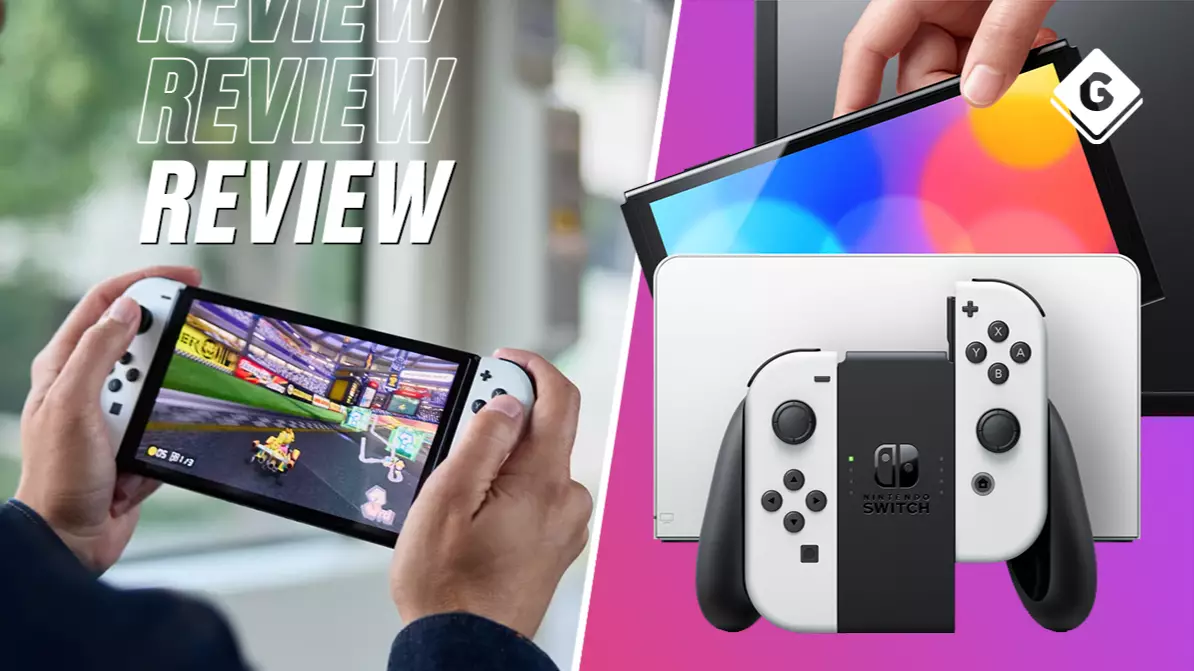
The new Nintendo Switch - OLED Model is simply the best the Switch has ever been. If you're yet to buy Nintendo's current-gen console, this is the version of it to get. Its improvements over what came before are slight but significant, and the unit absolutely feels like a premium item worth its asking price. The changes that its makers have highlighted - the improved screen, better speakers, a stronger and wider stand - make their presence felt and add up to a better product. In short: it's the new gold standard for handheld console play in 2021, with the same home-use flexibility that the Switch has always enjoyed (discounting the portable-only Lite, of course).
That's the short version of this review, then. If you've read enough, good stuff, I'm glad we could either confirm what you already were thinking, or perhaps added to a confusion of conflicting voices. We played a part, is what I'm saying. Now, the longer version necessitates that we start with what we had before the OLED's arrival: a perfectly fantastic console, in spite of its shortcomings.
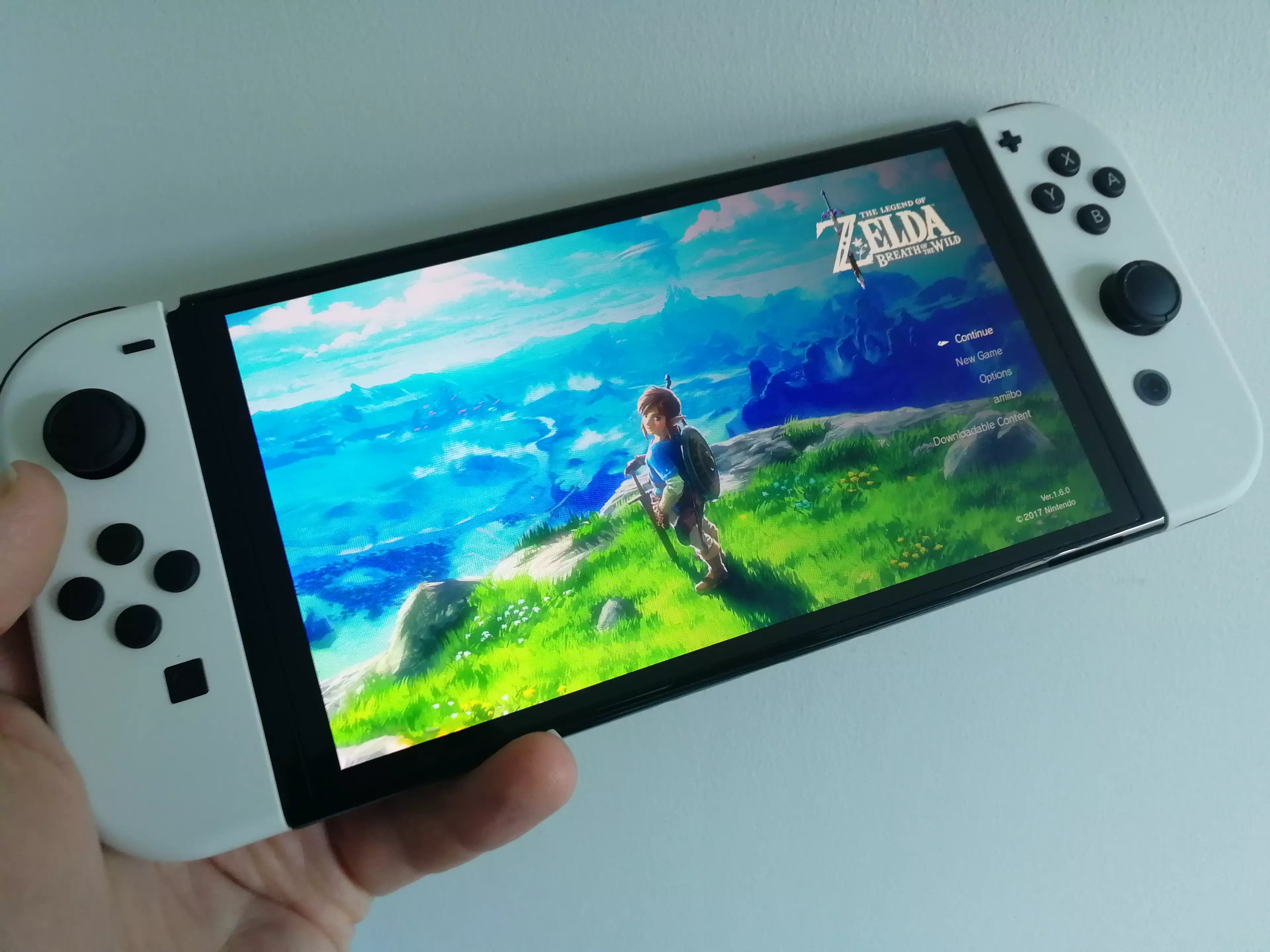
Advert
When the original Nintendo Switch debuted in early 2017, it did so alongside a flurry of marketing that few of us expected to be too close to the truth. Advertising showed how we'd be taking this home-and-handheld hybrid console out to parties with us (rooftop setting, optional), and plucking the system from its dock to catch a flight, where we'd pick up our game from a convenient suspend state somewhere over the Atlantic.
And yet, that is how we've used this device. At the very least, it's incredibly close to my relationship with it, over the past four years. My original Switch has been to countless pubs and bars, is a regular presence in my backpack for going anywhere, and has flown with me most of the way around the world. It's been to parties, it's been passed around in groups, and it regularly lit up my workday commutes in The Before Times. I've connected it to other devices for local multiplayer sessions, and sped through countless online Mario Kart 8 Deluxe races. The reality actually matched the marketing, then - which isn't something that happens all that often with products promising new ways to play.
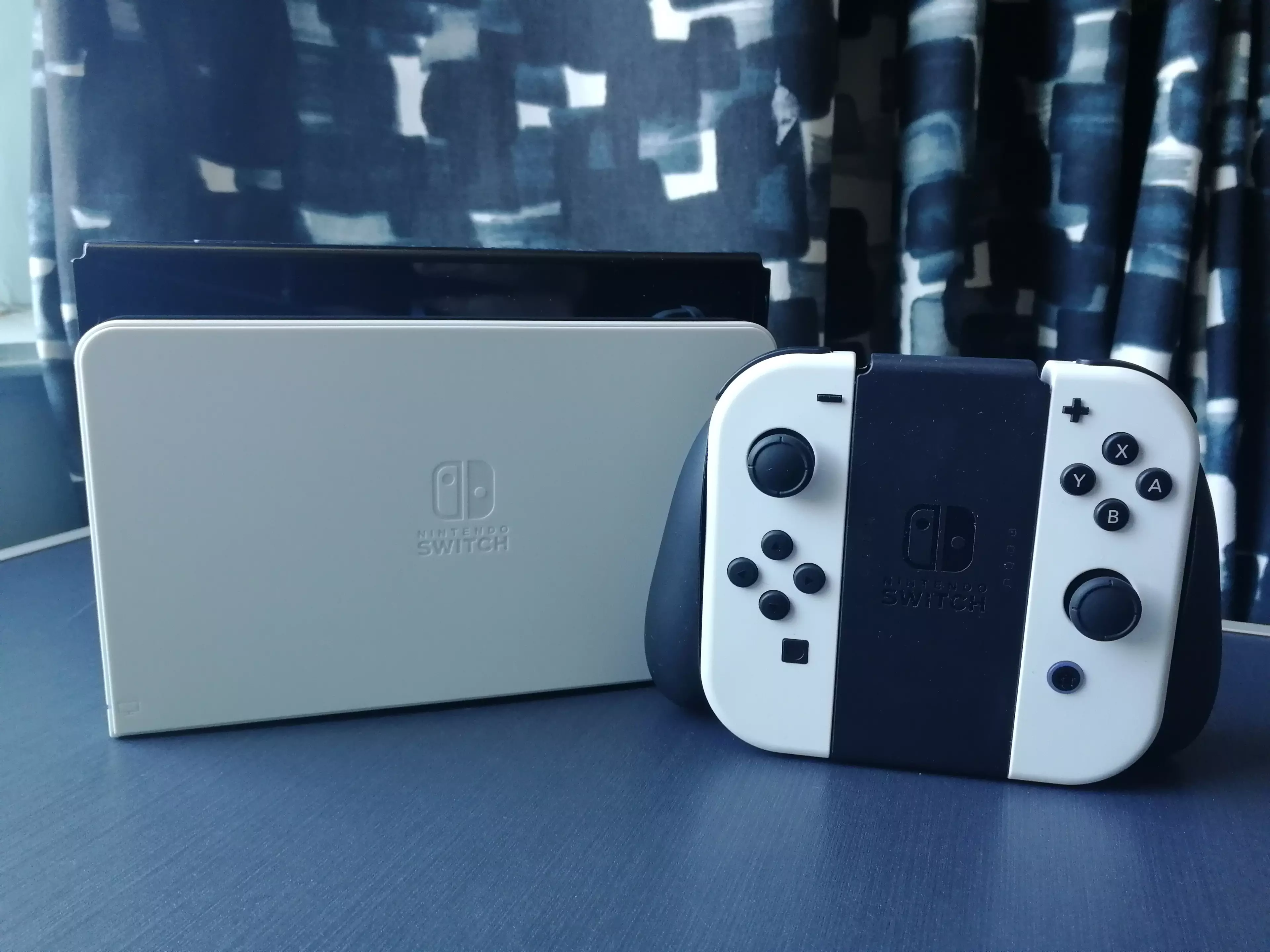
In my opinion, as someone who's played on a lot of gaming hardware across over 35 years (my earliest memory of gaming being on a ZX Spectrum, playing a Frogger rip-off called Hopper, probably around 1984), the Nintendo Switch is the greatest console of all time. And that's as it is, as it was, in its 2017 guise, flaws and all: detachable JoyCons liable to drift, a stand that could barely support the system's weight, a dock that might scratch the screen, half-arsed online capabilities, pitiful internal storage out of the box, and a 720p display that was rarely unsightly but did mangle a few cross-platform games into blurry messes.
Advert
Even with the bad considered, the good of the Switch has elevated it to all-timer status. No, The Witcher 3: Wild Hunt might not look as good on Switch as it does your expensive PC, but I can play this version on a bus, on a plane, tucked up in bed or on the toilet, if I wanted to. That such a game is even part of the Switch's library - games 1, 2, 4 and 5 of GAMINGbible's own greatest games of all time list are on the system - feels like magic. The Switch, more so than any other contemporary console, spans gaming generations fantastically - it can bring 8-bit platformers to vivid new life, just as it can deliver an expansive, immersive, incredibly beautiful open-world experience like The Legend of Zelda: Breath of the Wild. I really, really like this thing, basically. This thing that has now been put in the shadow rather by a successor that does enough to steal away the OG Switch's crown.
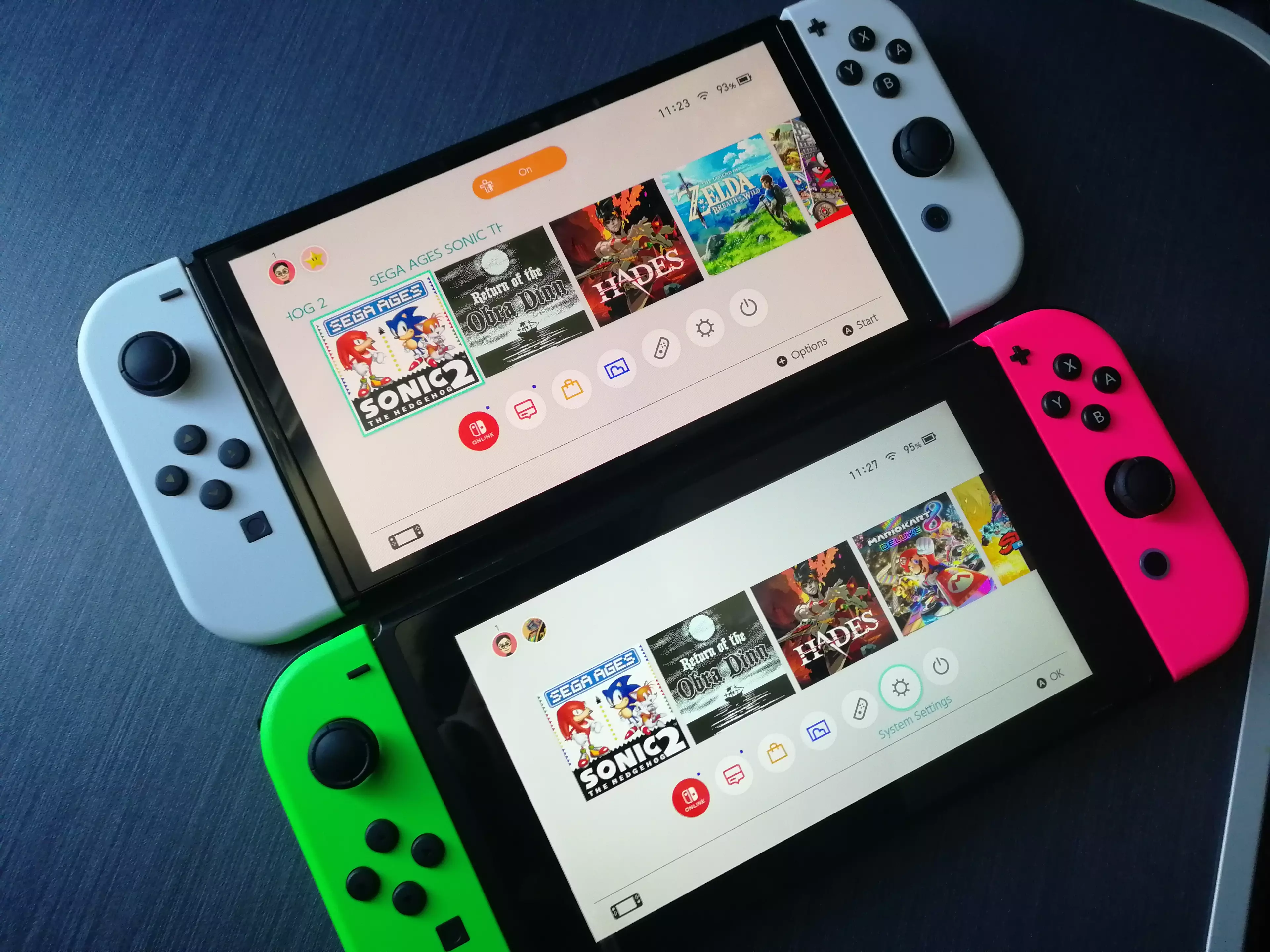
And so to the OLED, and what it adds to this already incredibly appealing mix. Firstly, no, this is not the much-rumoured 'Switch Pro' - the OLED still runs your games at 720p handheld, but the difference, the improvement, comes through in how these moving images are generated. The original Switch's LED screen is fine, of course - there's a reason why so many devices use LED. But whereas an LED screen creates its picture using a backlight, with LEDs shining through an LCD layer, OLEDs produce light from every pixel on the screen. The clue's in the name, really: Organic Light Emitting Diode. Loads of them, all alight at once.
And what that means, in practice, is your Switch games appearing sharper, crisper, with greater colour contrast and deeper darks nestling nicely beside gleaming brights. Given the technology, it likely won't surprise you that pixel-art games in particular appear far more detailed on the OLED than the older Switch screen. Cartoon-styled titles also benefit - our game of the year for 2020, Hades, looks so much richer on the OLED than it did before, likewise Streets of Rage 4.
Advert
Check out this video of the SEGA AGES version of Sonic The Hedgehog 2, running on both a 2017 model Switch (top) and the new OLED Model (bottom). It's not easy to really capture the IRL difference using a phone camera, but you'll note the crisper pixels in the screen below, and the higher contrast of colours. I also noticed, while filming this, that the OLED model loaded this game much faster than my launch-model Switch.
The increased size of the screen - seven whole inches to the previous 6.2 - only feels notable when you go from the OLED back to an older model, as playing close up in handheld mode doesn't make for a huge difference. It's not like you can suddenly see things on the screen that weren't there before courtesy of those thinner bezels, as the image is only bigger, not expanded. It really is all about those little individual diodes, doing their thing, which drives the OLED's superior visuals.
OLED screens also tend to use less energy than LED equivalents - and in my dozen or so hours of using the Switch OLED, I can confirm that its battery life is vastly improved compared to my 2017 launch model. It used to be that I could fire up Breath of the Wild at a near-full battery and see it mostly drained two or three hours later. That was usually the signal to go to bed. But on the OLED I played and played and played some more, checking the dashboard now and then to see my percentage falling only very slowly. The end result: I accidentally stayed up far too late the other night, making my way off of Hyrule's Great Plateau. Worth it. (And related, one of the greatest joys of testing the OLED has been restarting some of the Switch's best first-party games, like BOTW and Super Mario Odyssey. Something to note, if you're itching for a replay.)
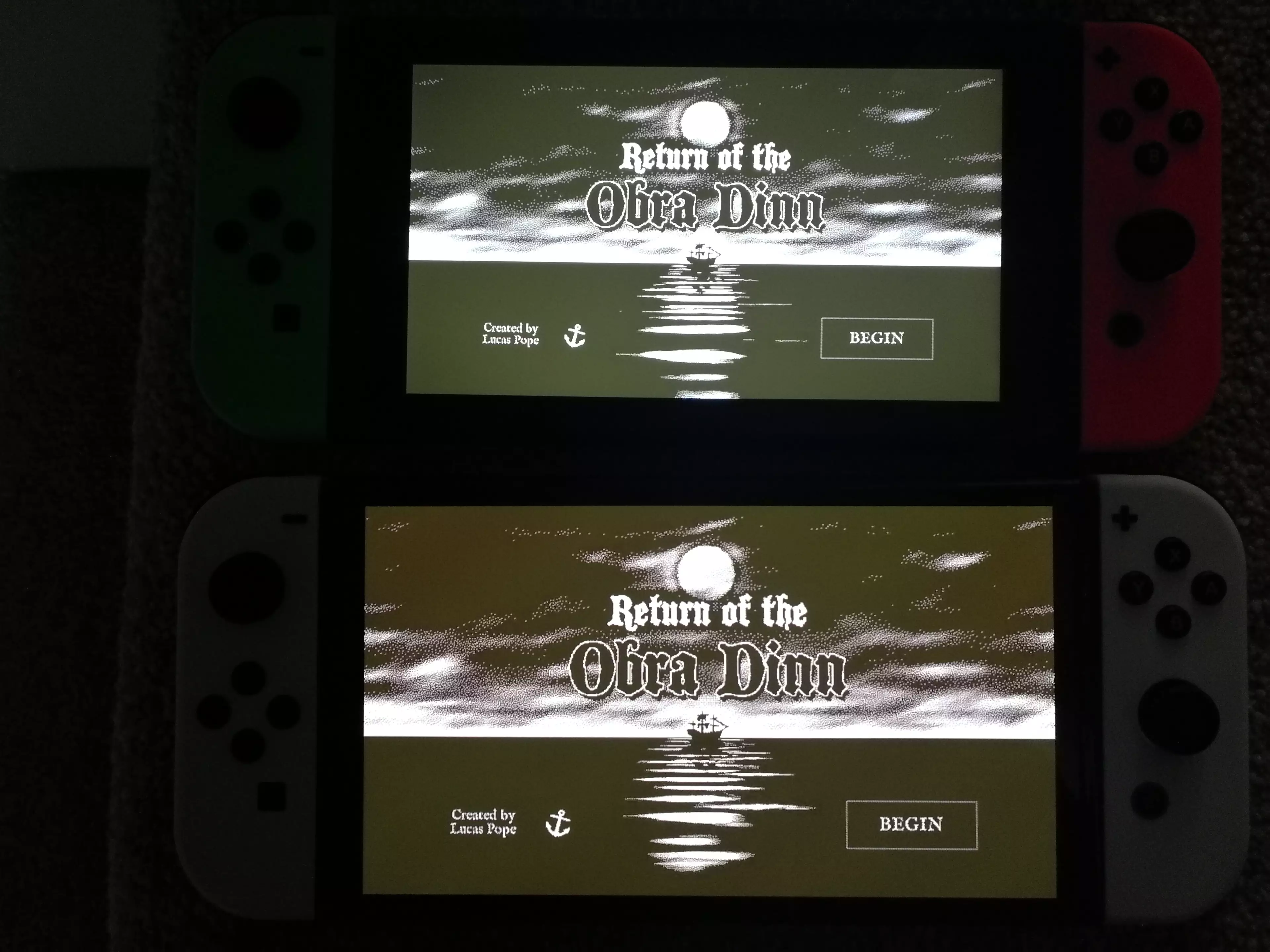
The OLED has the same 4310mAh Lithium-ion battery inside as recent regular Switches, and I don't have a newer Switch (the 2019 'XKW' version) to compare it to, but I get the impression that the new display is saving on some substantial drain. Certainly, if you're picking up an OLED to replace your 2017 launch Switch, you will see a big difference in how long the console can run for.
Advert
You'll also hear a big change, too. The OLED's speakers are in the same spot as before, bottom left and right of the screen, but Nintendo's proclaimed "enhanced audio" will have you catching the sweet song of a Hyrulian sparrow like never before. The mix just seems more detailed, busier without becoming overwhelming, and in open-world games like BOTW and Odyssey, this provides a greater sense of being in a tangible place, rather than a level in a video game. I'm not sure how that's achieved exactly - but it's disappointing that it's only heard using the speakers, and not in headphones - plug those in and it's the same audio as your older Switch. Which is a shame, as that's how most players will be using this in handheld mode, I imagine.
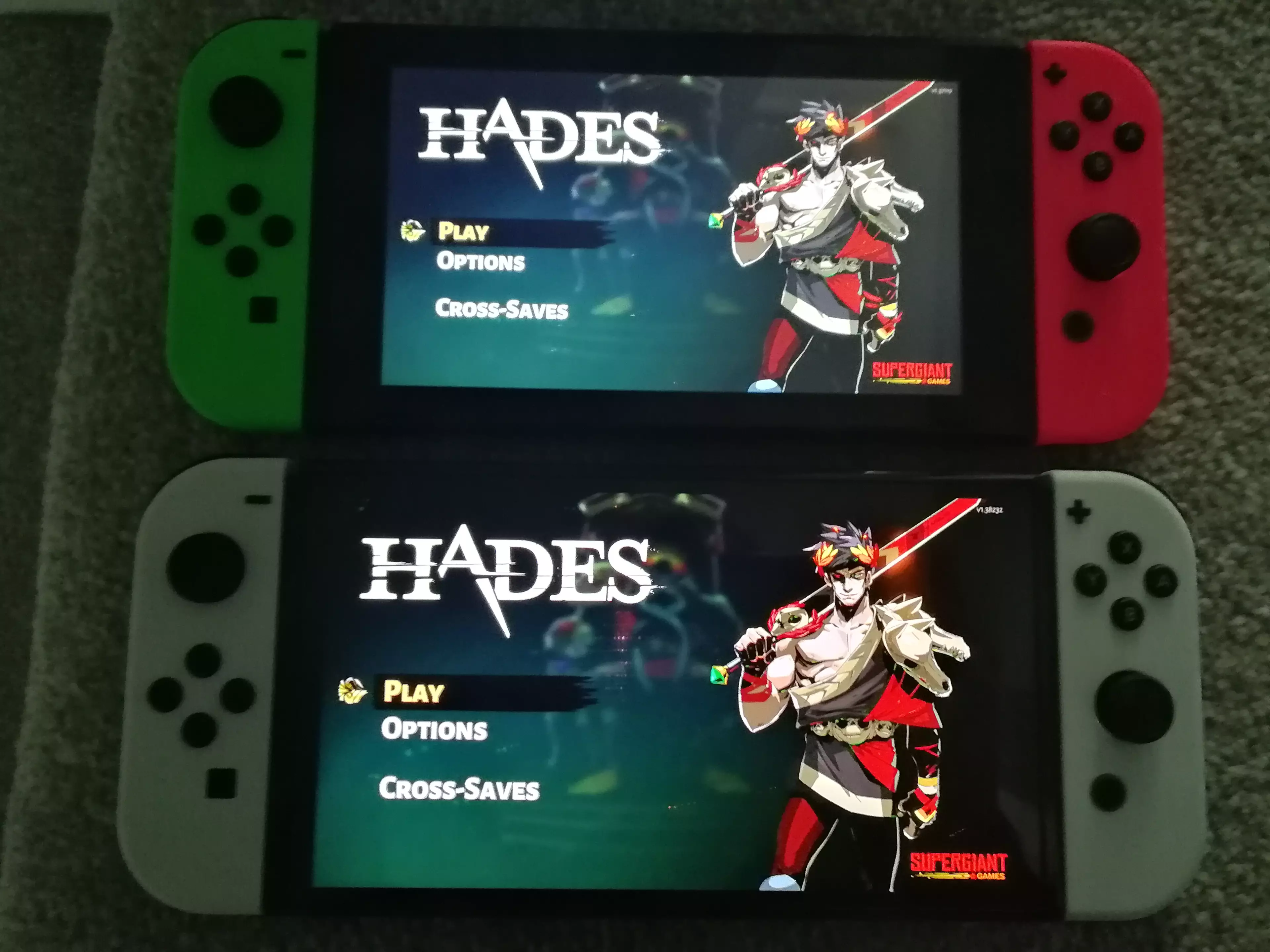
The OLED comes with a slightly modified dock for connecting your console to your TV screen. The output here is short of 4K still, locked at 1080p and leaving the OLED behind its home-only peers like the PlayStation 4 Pro and Xbox One X (I'm not sure it's fair to align the Switch with the PS5 and Series X/S, until we get a 'Pro' model). It's the same display as any other, older Switch, then. The dock does, however, contain the technology to output a 4K signal, as discovered by YouTuber Nintendo Prime, which suggests there's some future-proofing at play here. A 'Pro' model, then, would likely ship with this same dock, enabling existing owners to simply slide their new and improved Switch of the future straight into their home setup, no cabling changes necessary. Also added to the OLED dock is an ethernet port, entirely absent on previous models, which will come in handy for players with ropey WiFi.
Lifting the OLED out of its comfy little cradle and it's a delight to see Nintendo finally provide a stand worth a damn, rather than the rickety and painfully thin excuse we had until now. The OLED stand runs almost the full width of the console, JoyCons removed, and is firm enough at its joint to hold the unit at a variety of angles, which is great when playing with kids (or smaller adults, of course) who sit at different heights to you.
Advert
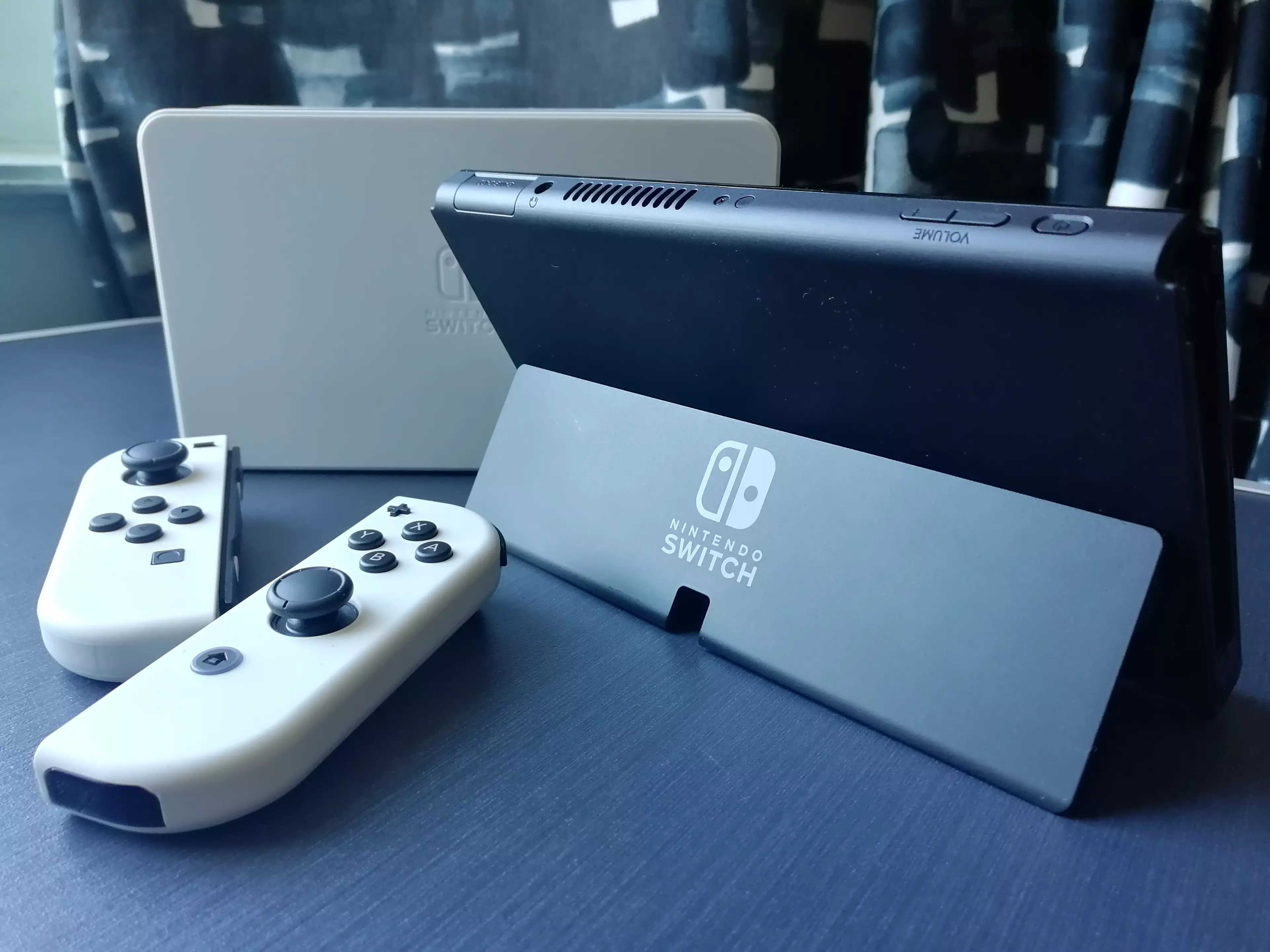
OLED screens in general have improved viewing angles compared to regular LEDs, so that plus the stand make this new Switch a better option for if you're going multiplayer on the move. Ergonomics wise there's no changes at all, and weight wise any difference there might be is minimal enough to not be detectable in hand - so if you'd get cramps after an hour of handheld play before, you'll do so here, too.
The final improvement to note is that the OLED has 64GB of storage space included out of the box, rather than the original Switch's 32GB. That's great, but do note that the console's operating system fills about 10GB (unless my maths is way off), so you won't actually have a full 64GBs to load up with downloadable games. That said, if you've owned a console in the last 15 years or so, you pretty much expect that to be the case. That memory is expandable of course, with a microSD card slot located beneath the stand. I'm yet to plug anything into it, but I assume it works just as the older Switches do - get more space, keep more games.
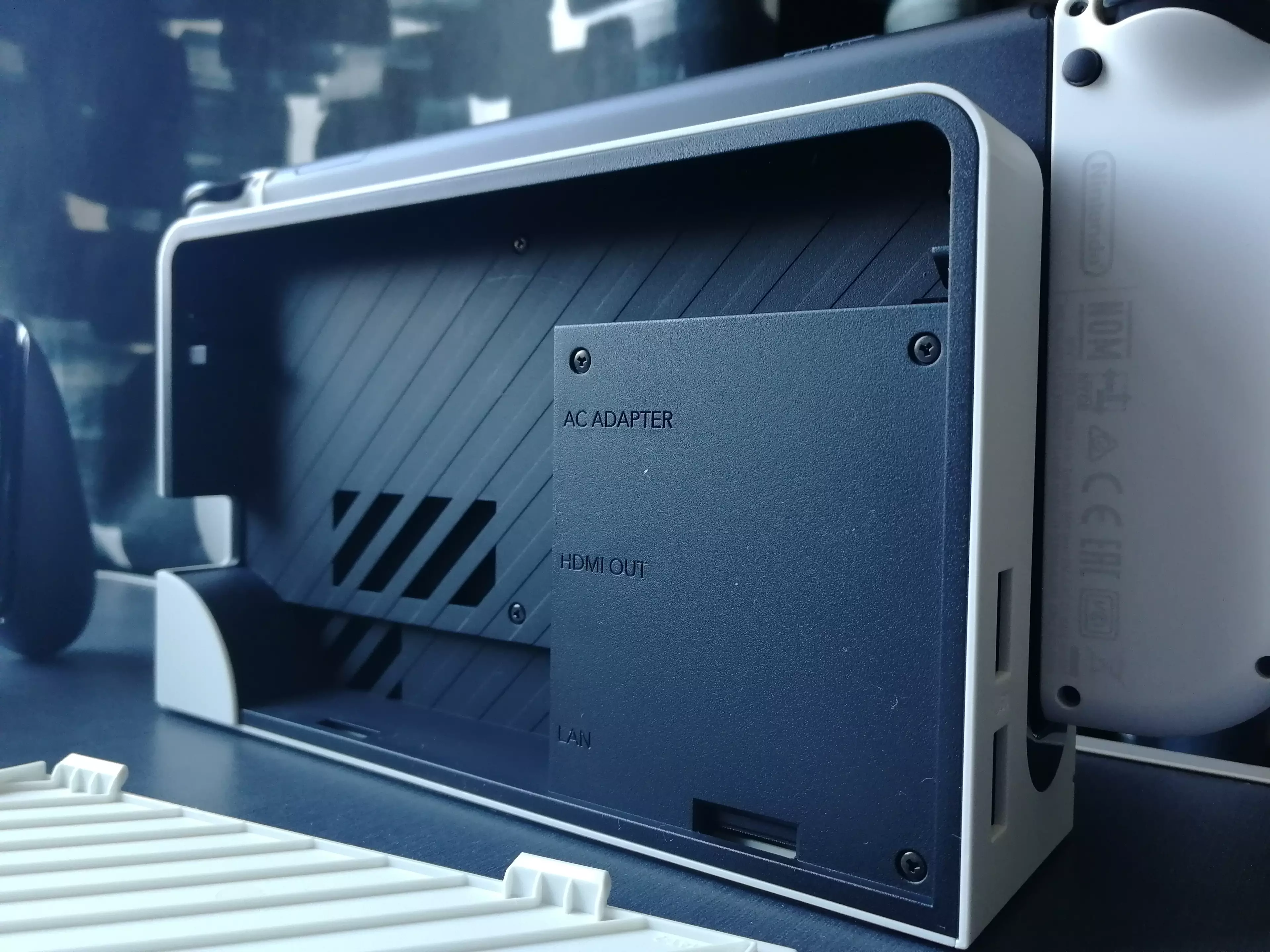
To loop back to where we began, the OLED is the best version of the best console on the market, right now. It has kept a lot of what works for it - the great JoyCons (drift issues aside, which I have had on my original controllers from four years ago), that hybrid play pattern, the sheer convenience of it all - and tweaked the product for the better in a few key areas, notably sound and vision. This isn't the great step forwards that some were wanting, far from the 'Pro' we'll likely still get in the not-so-distant future; but if you're in the market right now for a new Switch, as a replacement to one on its last legs or because you've never had one before, this is the one to go for. If you've a Switch right now that works just fine, the upgrades on the OLED probably aren't worth shelling out for. But when the best out there gets better, it's hard to not want to get your hands on it.
Pros: notably improved visuals and audio in handheld mode, sturdy rear stand, dock is future-proofed for a 4K model, expanded memory out of the box
Cons: upgrades are ultimately incremental and don't represent reasons to buy if you already have a working Switch, some people will be pissed that there's no 4K output, enhanced audio only works through the speakers
For fans of: Nintendo consoles, Nintendo games, owning the best console around (YMMV, lol)
The Nintendo Switch - OLED Model used for this review was provided by Nintendo. The console, including JoyCons, Dock, controller grip and leads, is available on October 8, 2021 and retails for £309.99. As well as the White model featured here, the OLED Model is available in the same red and blue 'Neon' colours as the original launch Switch.
Featured Image Credit: NintendoTopics: Review, Nintendo Switch, Opinion